Lowland rainforest
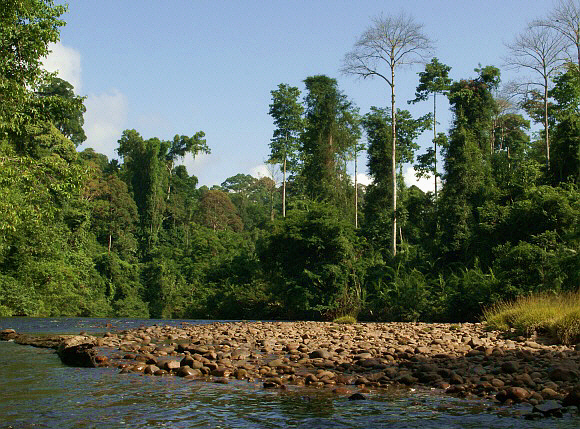
Tributary of Sungai Tembeling, altitude 100m, Malaysia – Adrian Hoskins
The incredibly beautiful and species-rich rainforests of the tropics are rapidly disappearing. Paradise is being replaced by palm oil plantations, soybean prairies, and cattle ranches. The cloud forests are disappearing almost as quickly, replaced by coffee, tea, rubber, and eucalyptus plantations.
On this page, we begin by visiting the lowland rainforests of West Malaysia, and then take a journey across Peru, briefly exploring some of the wonderful places that still survive – where the diversity and abundance of butterflies, moths, and forest wildlife can only be described as mind-boggling.
The illustration above depicts a minor black-water tributary of the Sungai Tembeling river in Taman Negara National Park, West Malaysia. The interior of Taman Negara is dense and dark, with few butterflies to be seen.
The reason is that butterflies in the tropics spend most of their lives high in the treetops. Luckily for butterfly enthusiasts, the males of many species periodically descend to ground level to imbibe mineralized moisture, and at these times, it is common to see swarms of Graphium sarpedon and Catopsilia pomona settled on river sandbanks.
Numerous other beautiful species, such as Cyrestis Mapwings, Spindasis Silverlines, Parthenos Clippers, and Cirrochroa Yeoman butterflies, can also be found along the shores. At slightly higher altitudes, there are a myriad of even more stunning butterflies, including spectacular Triodes and Trogonoptera birdwings, Lamproptera Dragontails, and exquisite long-tailed hairstreaks such as Eooxylides tharis.
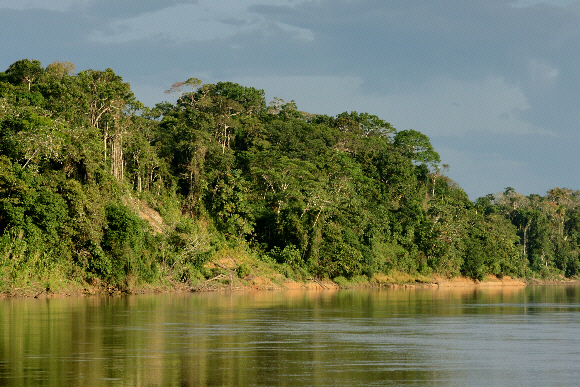
Rio Madre de Dios, altitude 500m, Peru – Adrian Hoskins
Our journey now takes us to the Amazon. Vast swathes of rainforest in South America have been destroyed or severely degraded, but there are still many places in Brazil, Ecuador, Peru and Bolivia where sizable tracts of unspoilt habitat survive.
The rainforests at the eastern edge of the Peruvian Andes are extremely rich in butterflies. Manu and Tambopata for example are both known to hold over 1500 species. The photo above was taken from a boat on the mighty Rio Madre de Dios river. The river sandbanks here attract hundreds of different species
Including Heraclides Swallowtails, stunning Marpesia Daggerwings, Adelpha Sisters, Baeotus Beauties, Panacea Flashers, and beautiful Philaethria and Dryas Longwings.
Searching tree trunks in open areas often reveals the presence of several beautiful calico-patterned Hamadryas Cracker species. They are so named because the males produce a fascinating crackling sound as they cavort around the trees. The interior of the forests here teem with butterflies. Along the well-established trails, it is common to see huge dazzling blue Morpho butterflies, delicate Ithomia Glasswings, and Satyrines including Caeruleuptychia, Taygetis, Cithaerias, Haetera, and Pierella.
At dusk and dawn, enormous Caligo Owl butterflies are commonly seen. This is also a great time to go bird-watching or to travel by canoe along the river tributaries, where you can often find families of capybaras on the riverbanks. Other creatures that can be seen include caiman, peccaries, and sloths. Tapirs are also seen occasionally, although these beautiful and fascinating animals are quite shy and difficult to spot.
Rainforest / Cloudforest transition zone
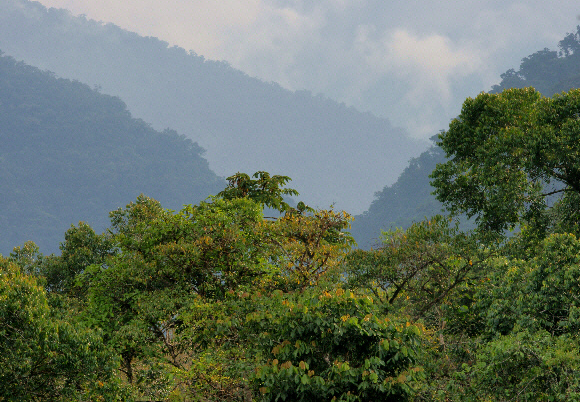
Cloudforest at Rio Kosnipata, altitude 1400m, Manu, Peru – Adrian Hoskins
The mid-elevation forests lying between about 600-1600m above sea level have the highest species diversity as they form a transition zone where lowland butterflies and cloudforest species overlap. The scenery at this altitude is overwhelmingly beautiful and is best appreciated in the early morning when the mist and cloud rises, and the warm glow of sunshine illuminates the mountainsides.
Metalmark butterflies are frequent along sunny trails in the forest. The numerous stunning species encountered include long-tailed Rhetus and Ancyluris Doctors, amazing transparent Chorinia Angels, pretty Melanis Pixies, metallic blue Lasaia butterflies, and exquisite glittering green Caria species.
Among the most well-known and beautiful species in Amazonia are the Heliconius Longwings. These butterflies are perhaps the most graceful anywhere on Earth, spectacularly marked with streaks and patches of red, yellow, and/or blue on a black ground color.
At these elevations, we also encounter many members of the Biblidinae, including fascinating Diaethria and Callicore Numberwings, various Doxocopa Emperors, and gorgeous Catonephele Firewings. The mid-elevation forests are also home to many large and spectacular skippers, including golden-yellow Myscelus Glories, Pyrrhopyge Firetips, and blue-banded Phocides Paradise Skippers.
High Altitude Cloudforest
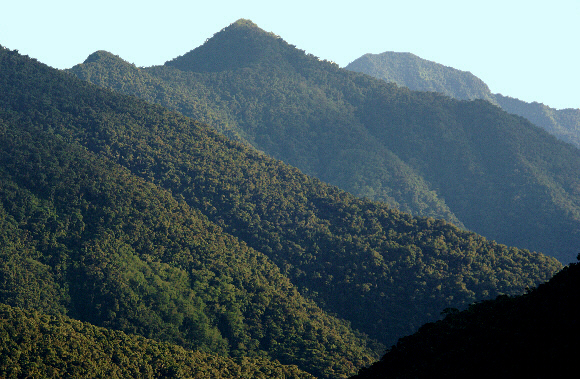
Cloudforest, altitude 2400m, Wayqecha-Manu road, Peru – Adrian Hoskins
At higher elevations, rain is more frequent, and even in the middle of the dry season, the mountains are often shrouded in mist until late morning. Temperatures in the lowlands often exceed 35°C, but at altitudes above 2000m, it rarely rises above 25°C and is often considerably cooler. Consequently, the species found here differ from those found in the lowlands.
At 1600m, most of the low altitude and transition-zone families are still represented, but there is a marked change in the genera present. Among the Nymphalidae, the dominant genera include Dione Longwings, Pteronymia Glasswings, Hypanartia Admirals, and Perisama species. Above this altitude, they are joined by increasing numbers of Pronophilines. The latter are a fascinating group of high-elevation Satyrines, including genera such as Lymanopoda, Manerebia, Corades, and Lasiophila.
Elfin Forest / Paramo Transition Zone
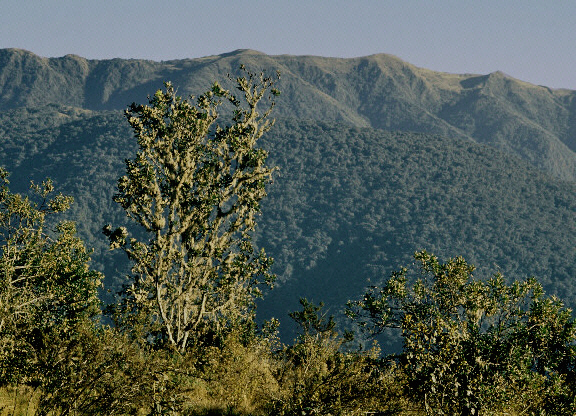
Cloudforest / puna grassland transition zone, altitude 3000m, Tres Cruces, Peru – Adrian Hoskins
At about 3000m altitude, there is a dramatic change in habitat as the cloud forests give way to the paramo and puna grasslands. Butterfly abundance and diversity here are considerably poorer than at lower altitudes, but at the forest/paramo transition zone, there are many fascinating genera to be found.
Swirling mists often obscure the scenery and cause butterflies to hide away in bushes or in deep grass tussocks. Sunshine periodically breaks through, however, and butterfly enthusiasts then grab the opportunity to search for high altitude specialties such as Colias Andean Clouded Yellows, Lymanopoda Mountain Satyrs, and ornate Junea butterflies.
The great appeal of high altitude butterflying is that such habitats hold many butterflies that are still unknown to science, so there is a good chance of discovering a new species among the Pronophiline genera Pedaliodes and Steremnia.
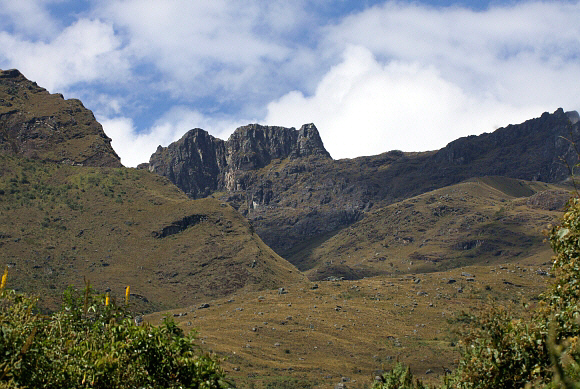
Puna grassland, altitude 3500-4000m, Shismay, Peru – Adrian Hoskins
